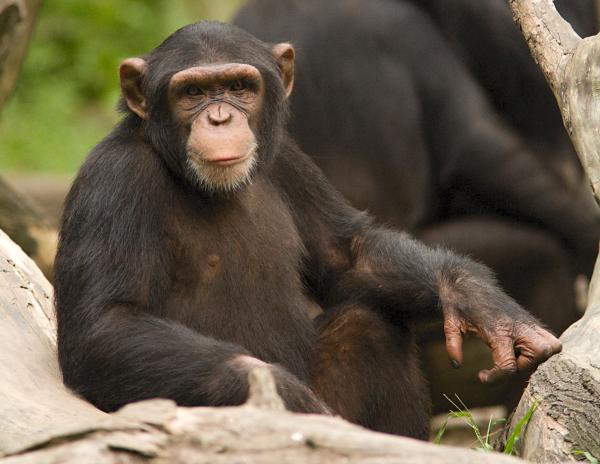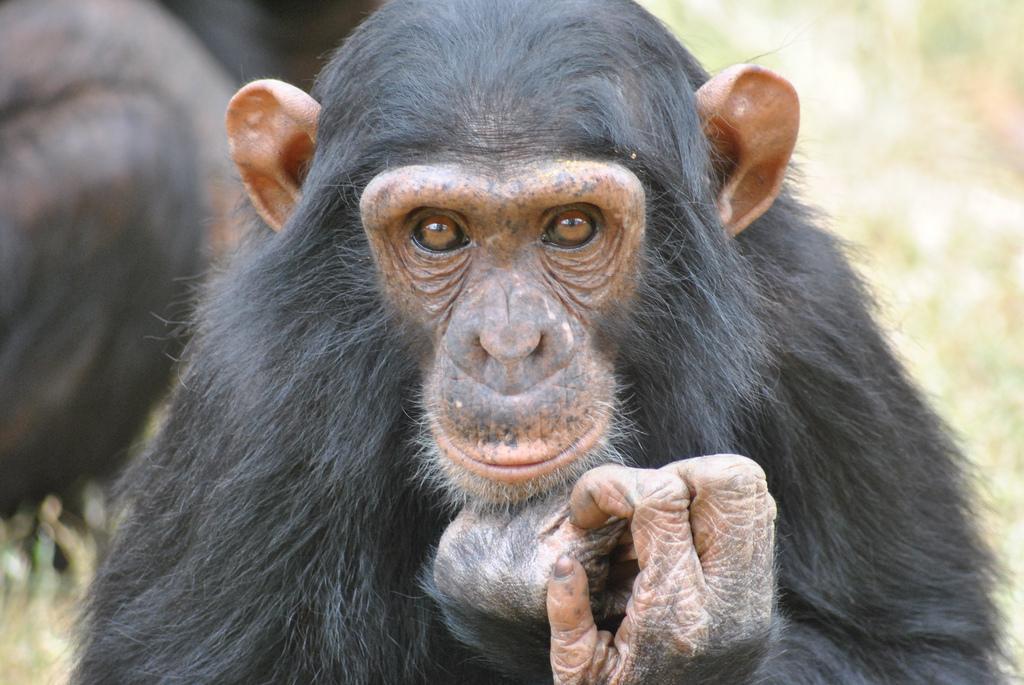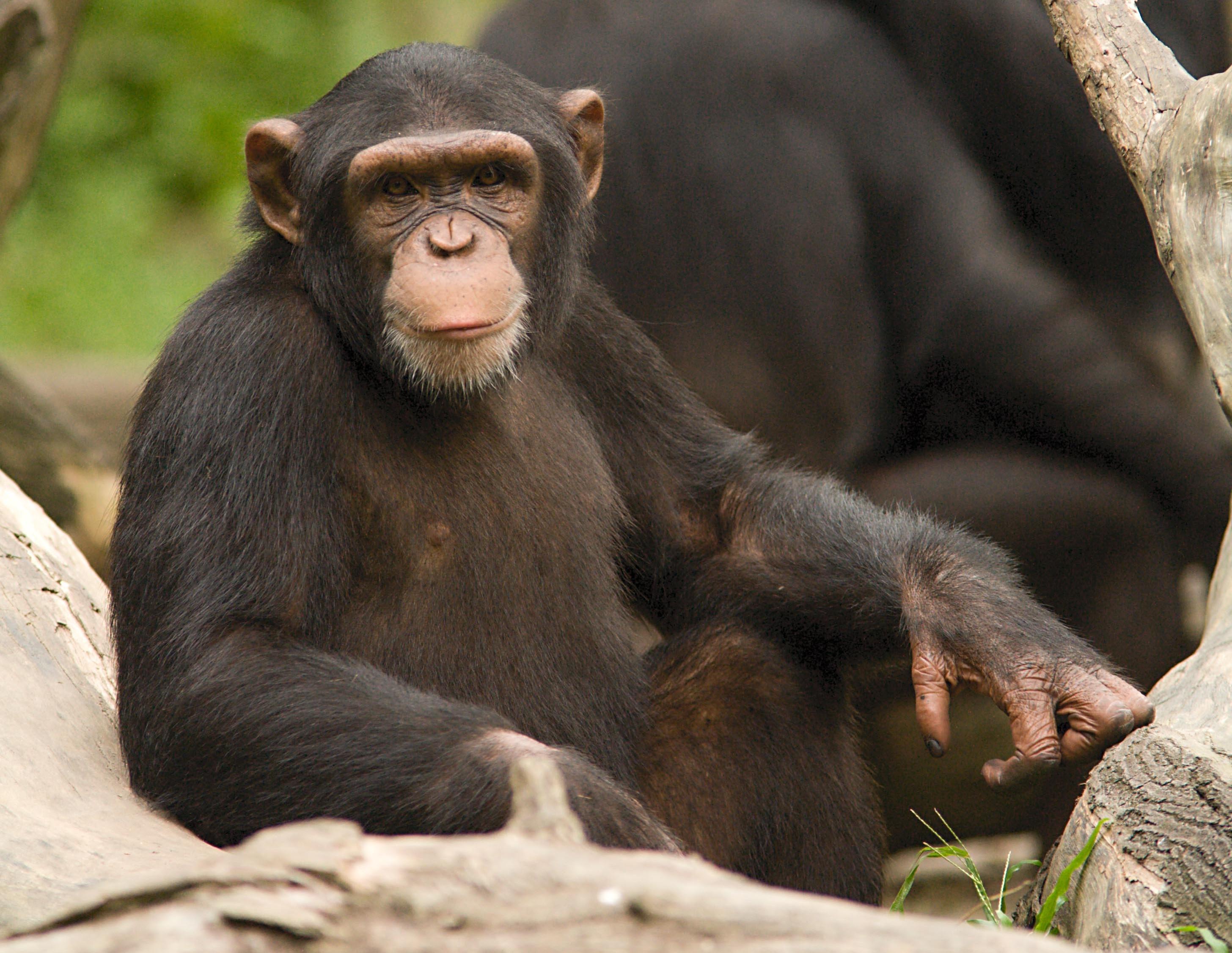How Similar Are Humans and Chimpanzees?


Humans and chimpanzees are our closest living relatives, sharing an estimated 98.8% of our DNA. This remarkable genetic similarity reflects our shared evolutionary history, tracing back to a common ancestor that lived approximately 6-7 million years ago. This shared ancestry has led to striking parallels in the physical, cognitive, and behavioral aspects of both species.
The following article by thedailyECO explores the similarities between humans and chimpanzees. By examining the traits and behaviors that we share with these primates, we can gain a deeper understanding of the processes that shaped our unique evolutionary trajectory.
Genetic similarities
Humans and chimpanzees share an extraordinary degree of genetic similarity. Early studies estimated that the two species shared about 99% of their DNA, a figure that has since been refined to approximately 98.8%. This remarkable overlap in genetic makeup reflects our close evolutionary relationship, as we are believed to have diverged from a common ancestor around 7 million years ago.
Deeper examination of specific genes reveals remarkable parallels in their structure and function. For instance, both humans and chimpanzees possess the FOXP2 gene, a crucial regulator of language and speech development. The remarkable conservation of this gene across our species highlights the shared neural basis for communication and language comprehension.
The shared DNA between humans and chimpanzees extends to the traits and functions we exhibit. Our physical similarities are evident in our upright posture, grasping hands, and facial features. Behavioral parallels are equally striking, with both species demonstrating intricate social structures, complex communication systems, and problem-solving abilities.
The profound genetic similarities between humans and chimpanzees provide profound insights into our evolutionary history and the emergence of our unique traits. These shared genetic underpinnings underscore the intricate interplay between genetic factors and environmental influences in shaping our biological and behavioral diversity. In the following sections, we will explore these similarities in more detail.
Want to delve deeper into the evolutionary roots of humans and chimpanzees? Discover the fascinating classification and characteristics of primates in our other article.

Physical similarities
Humans and chimpanzees exhibit striking physical similarities that further underscore their evolutionary proximity. These physical resemblances extend to the skeletal structure, limb proportions, and facial features, providing tangible evidence of our shared ancestry.
Comparing the skeletons of humans and chimpanzees reveals remarkable similarities, particularly in the arrangement of bones and the overall body plan. Both species share a similar spine, consisting of vertebrae that support the spinal column and enable movement. Additionally, the limbs, ranging from the shoulders to the wrists and ankles, exhibit striking parallels, reflecting the shared ability to move and manipulate objects.
While the skeletal structures of humans and chimpanzees share basic similarities, there are subtle differences in limb proportions. Humans have adapted to walking upright, showcasing a more erect posture with longer legs relative to their arms. In contrast, chimpanzees retain a more four-limbed stance, with arms and legs of nearly equal length, reflecting their arboreal lifestyle.
A notable feature shared by humans and chimpanzees is the presence of opposable thumbs. This anatomical arrangement, where the thumb can oppose the other fingers, grants exceptional dexterity and manipulation capabilities. The opposable thumb plays a crucial role in tool-making and foraging, especially in chimpanzees, renowned for their resourcefulness and tool-using abilities.
The facial features of humans and chimpanzees also exhibit striking similarities, particularly in the muscles responsible for facial expressions. Both species possess a complex network of facial muscles that enable them to express a wide range of emotions, including happiness, sadness, anger, and surprise. These shared facial expressions serve as a powerful means of communication, facilitating social interactions and conveying emotional states, transcending linguistic barriers.

Cognitive abilities and tool use
Humans and chimpanzees also exhibit striking similarities in their cognitive abilities, particularly in their capacity for tool use and problem-solving.
Both humans and chimpanzees have an innate ability to utilize tools to enhance their foraging, communication, and social behaviors. Chimpanzees have been observed using tools for various purposes, including:
- Termite fishing: chimpanzees use twigs, leaves, or grass stems to extract termites from their mounds, effectively reaching the insects while avoiding the protective stings of their soldier termites.
- Ant and honey harvesting: chimpanzees employ similarly improvised tools to harvest ants from anthills and honey from beehives, demonstrating their understanding of the natural world and ability to manipulate objects for specific goals.
- Stone knapping: Chimpanzees have also been observed knapping stones to create simple tools, such as sharp flakes and hammer stones, indicating their ability to modify and craft tools.
Beyond their tool-using behaviors, humans and chimpanzees share several cognitive abilities that contribute to their advanced problem-solving skills. These abilities include:
- Problem-solving: both species exhibit remarkable problem-solving abilities, capable of adapting and modifying their behavior to overcome obstacles and achieve desired outcomes.
- Memory: both humans and chimpanzees possess impressive memory capabilities, able to remember past experiences, locations, and social interactions, aiding in decision-making and tool use.
- Learning: both species are highly adaptable learners, capable of acquiring new skills through observation, imitation, and trial and error. This ability allows them to expand their repertoire of behaviors and adapt to changing environments.
These shared traits provide valuable insights into our shared ancestry and the intricate interplay of genetic and environmental factors that have shaped our cognitive development and diverse behavioral repertoires. Want to delve deeper into the evolutionary forces that shaped the remarkable similarities between humans and chimpanzees? Explore the fascinating concept of parallel evolution in our other article.

Social behavior
Both humans and chimpanzees live in complex social groups that are organized around family units. In chimpanzees, the basic family unit is a matrilineal group, consisting of related females, their offspring, and occasional adult males.
These matrilineal groups typically consist of 5-15 individuals, and they are the primary social units that engage in cooperative foraging, mutual grooming, and collective care for young.
Humans, on the other hand, exhibit more diverse family structures, ranging from nuclear families to extended families and multi-generational households. However, humans also share a strong emphasis on kinship and familial bonds, with close family relationships playing a crucial role in shaping individual identity, cultural practices, and social dynamics.
Despite these differences, both humans and chimpanzees exhibit striking similarities in their family structures. Both species form strong attachments to their kin, and family members provide mutual support, cooperation, and protection. These familial bonds play a fundamental role in shaping the social organization and dynamics of both human and chimpanzee groups.
Both humans and chimpanzees are highly cooperative species, exhibiting remarkable instances of teamwork and collaboration to achieve common goals. In chimpanzees, cooperation is evident in their joint foraging efforts, where individuals coordinate their actions to locate and exploit food resources efficiently.
Humans, on a grander scale, exhibit even more complex forms of cooperation, such as the creation of societies, the development of language, and the establishment of social institutions.
Emotional bonds play a central role in the social lives of both humans and chimpanzees, fostering strong social cohesion and facilitating cooperative behavior. Chimpanzees exhibit a wide range of emotions, including joy, sadness, anger, and fear. These emotions are often expressed through facial expressions, vocalizations, and body language, and they play a crucial role in social interactions, such as grooming, conflict resolution, and social bonding.
Humans, with their more complex cognitive abilities, have developed more elaborate emotional expressions and a richer emotional vocabulary. Humans also engage in more complex social interactions, such as empathy, compassion, and altruism, which are fueled by strong emotional connections between individuals.
Intrigued by the remarkable similarities between humans and chimpanzees? Delve deeper into the fascinating world of biological adaptation in our other article.
If you want to read similar articles to How Similar Are Humans and Chimpanzees?, we recommend you visit our Wild animals category.








